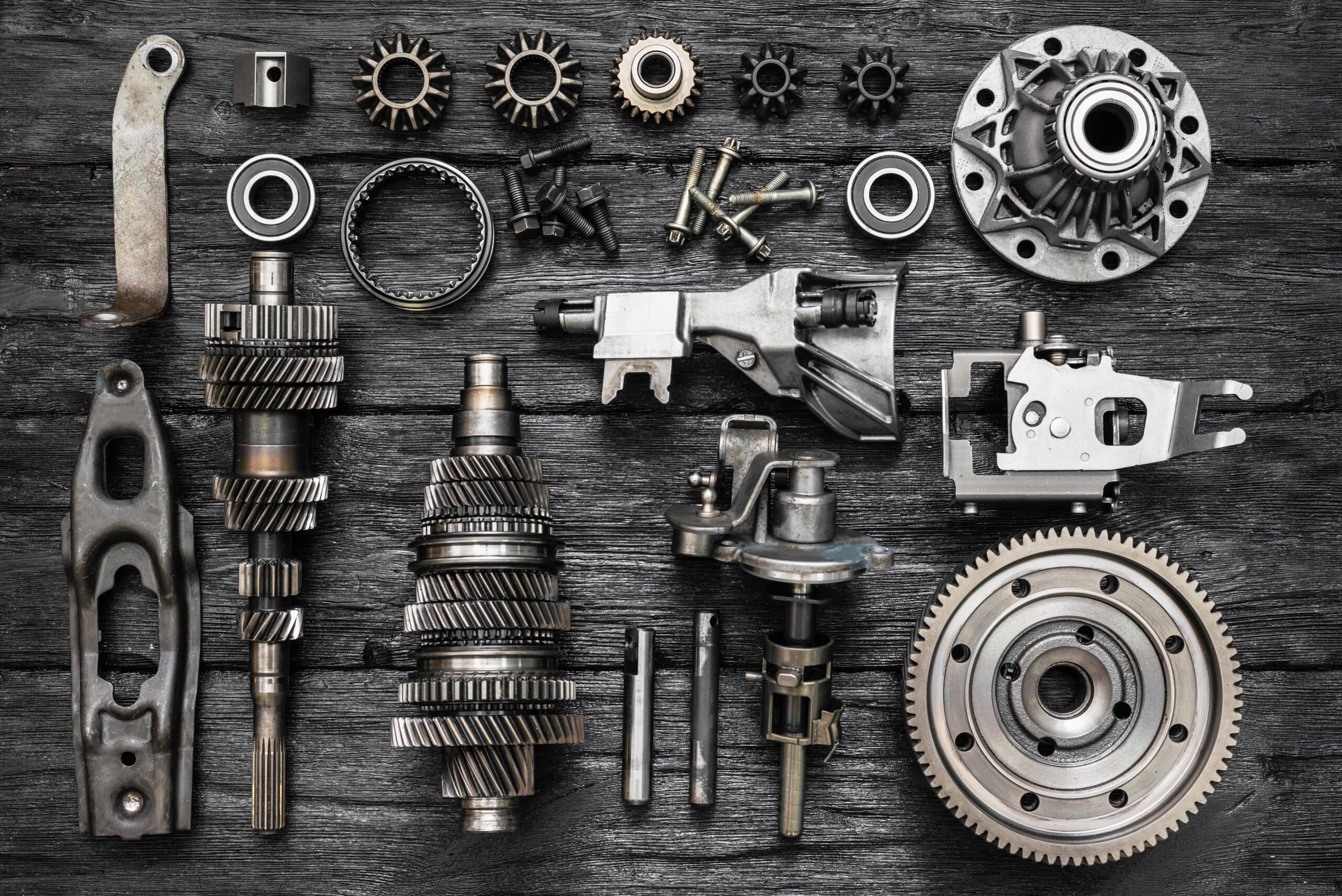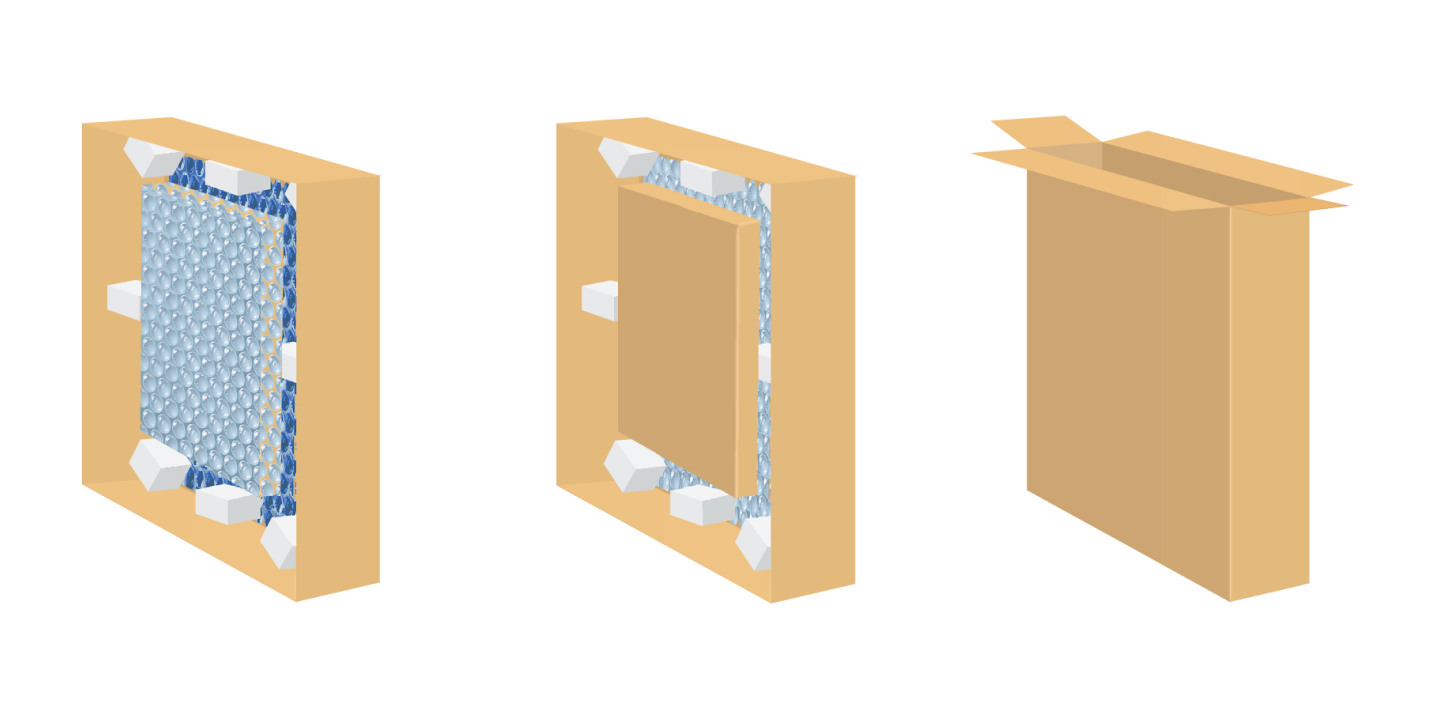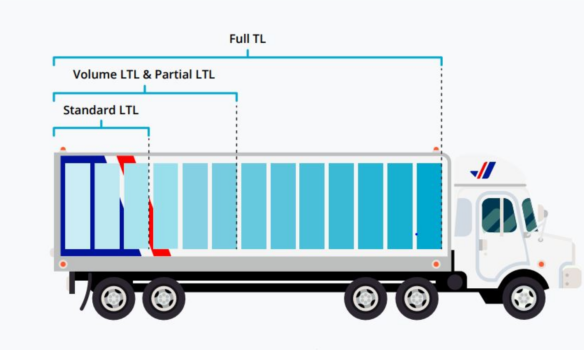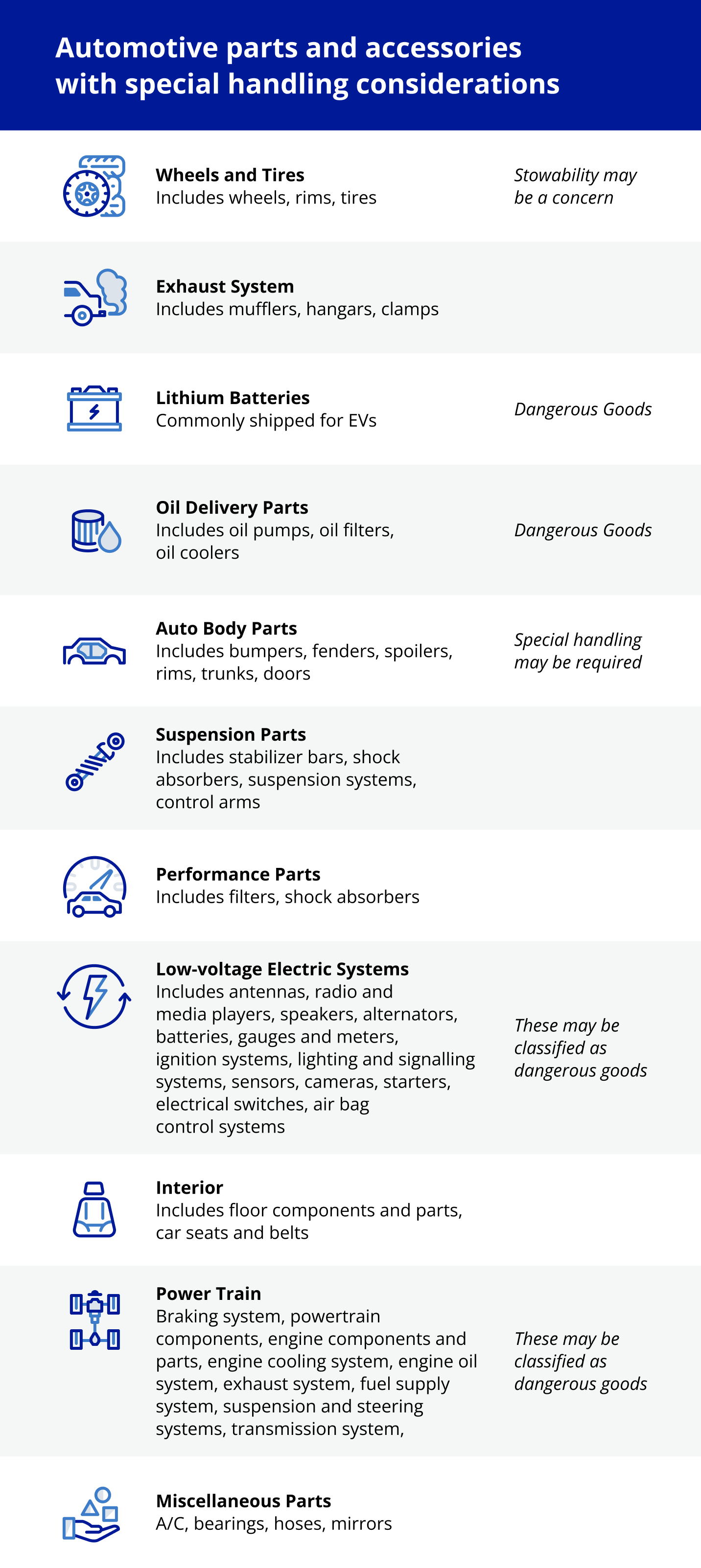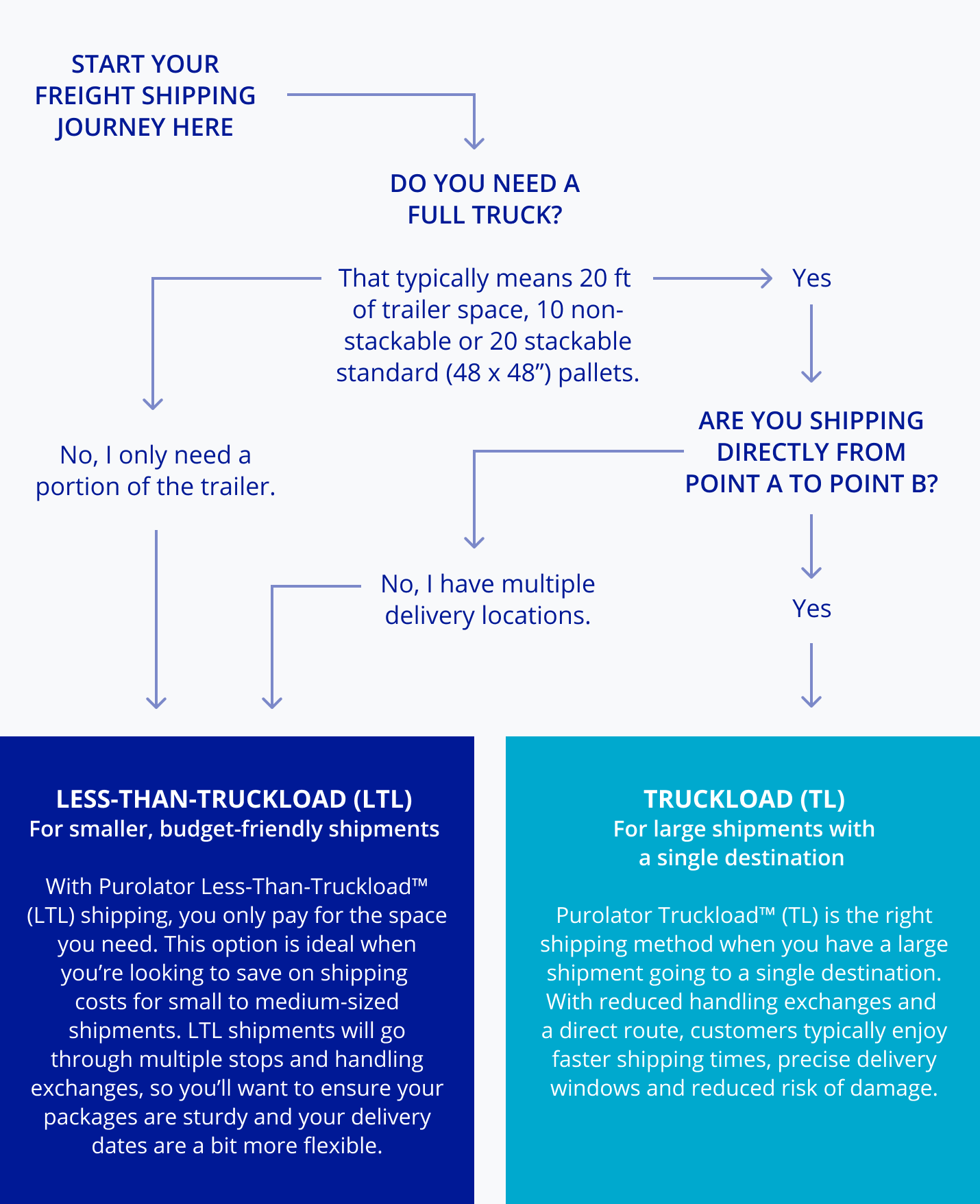How to Ship Auto Parts: Your Guide to North American and International Transport
The auto parts industry is an evolving market, with technological advancements, the growing need for replacements and repairs, and increased popularity of fuel-efficient and low-emission vehicles driving growth. Currently, the market is valued at $543.8 billion USD, with projections of $730 billion USD by 2030. For automotive manufacturers and businesses positioning to leverage gains in this market, it’s important to understand how to identify and anticipate potential challenges in car parts shipping. This is especially crucial in the light of ongoing backlogs from COVID and increased tariffs making it more difficult to get reasonably-priced parts. . Late shipments can lead to costly downtime, lost productivity and supply chain delays, resulting in negative customer sentiments toward your brand. Factors such as shifting trade policies and tariffs, regulation compliance for dangerous goods, and the auto industry’s highly-integrated nature can complicate shipping, with many car parts shipped cross-border up to 8 times before their assembly.
To avoid these risks, it’s crucial for automotive companies to stay competitive with an agile supply chain and solid preparation such as understanding how to package and properly label auto parts for cross-border and domestic transit to ensure they arrive undamaged and on time. From packing and labelling tips to special handling considerations, here’s your essential guide for how to ship auto parts.
Optimize your supply chain and fine-tune your automotive parts shipping strategy. Book a discovery call.
Key Takeaways
- Step 1. Pack your auto parts for shipping
- Step 2. Determine the freight class for your auto parts
- Step 3. Select your shipping service
- How to ship auto parts from Canada to the USA
- How tariffs impact shipping car parts across the US-Canada border
- 6 Key strategies for Canadian automotive businesses to avoid U.S. tariffs
- How to ship auto parts overseas
- How much does it cost to ship car parts?
- How Purolator helps automotive businesses
Step 1. Pack your auto parts for shipping
According to a 2024 Siemens Report, when car parts arrive damaged or not on time, this translates to a cost of $2.3 million, or $600 per second. Overcoming this obstacle comes down to packing and shipping your auto parts properly and working with a reliable shipping partner with expertise in auto parts delivery. Here’s how to pack your items so they arrive in good condition.
- Drain fluids as necessary. Prior to packaging and shipping, drain any automotive parts that contain lubricant or other fluids or demonstrate that the shipment is leakproof in every possible orientation.
- Protect auto parts before packaging. Secure automotive parts with appropriate materials such as plastic wrap, corrugated cardboard, boards, or foam to fill empty space, absorb shock and reduce risk of damage to your items. Seal smaller parts and accessories in plastic pouches.
- Choose between disposable or returnable packaging. As part of your reverse logistics strategy, consider investing in returnable packaging that can be reused in the manufacturing and distribution cycle to reduce your environmental impact and support your brand values.
- Select a strong corrugated cardboard box of appropriate size. Look for these qualities for proper packaging:
– Make sure the box is new and free of damage (do not reuse boxes)
– Rated at a minimum Edge Crush Test (ECT) value of 32 lbs/inch or bursting test of 200 lbs/ sq. inch as indicated on the Box Manufacturer’s Certificate
– Does not exceed 50% of the gross weight limit indicated on the Box Manufacturer’s Certificate
– Fills voids in the distribution container with at least 3 inches of cushioning material to restrict interior movement - Seal and protect boxes with heavy duty tape. If you’re using a pallet, ensure that all boxes are stacked, sealed, and anchored properly for transport. For each box, ensure all surfaces are dry and follow the “H-Style” taping method to prevent accidental opening during shipping.
- Label and mark packages clearly to avoid delays and potential losses. Use descriptive labels visible on the fork-lift sides of the shipment and attach all paperwork and commercial invoices. Properly labelled packages will not need extra paperwork for the 500 kg Exemption service.
For more information on proper packaging, see our comprehensive guide.
How to package large, oddly shaped and fragile items
How to pack mirrors, engine blocks and engine parts, bumpers, rims, mufflers and headlights
- Secure all parts with wrap and foam, plastic pouches for smaller items.
- Select a corrugated double wall box large enough to fit the item safely.
- Select padding materials as necessary to secure items.
How to pack doors, hoods and panels
- Cover the edges with plastic or foam.
- Place 6” rigid corrugated inserts on the corners and along the bottom.
- Package each part in its own double-wall corrugated container box that has the corresponding Edge Crush Test (ECT) value.
- Fill any empty space in your box with at least 3” of cushioning material to restrict movement.
How to pack electric vehicle (EV) batteries
- Ensure that each battery is separated from any metal objects to prevent short circuiting.
- Use non-conductive material like electrical tape or plastic bags to insulate battery terminals.
- Package batteries with material to prevent movement.
- Label all shipments. Almost all EV batteries are considered dangerous goods (DG) and must be transported by a carrier licensed to ship ground Dangerous Goods products like lithium batteries.
- For EV batteries that can weigh well over 500 kg, use the 500 kg Exemption.https://www.youtube.com/watch?v=4N2j0l8JQKc&feature=youtu.be
Step 2. Determine the freight class for your auto parts
National Motor Freight Traffic Association (NMFC) freight classes help define and classify the commodities within larger shipments, which standardizes the shipping process for you and your shipping partner. Your level of freight class will define your rate of shipping. The following factors determine your freight class:
- Density — Total cubic feet divided by total weight in pounds.
- Stowability — How easy or difficult it is to load with other shipments.
- Handling — Whether your shipment requires special loading equipment or precautions.
- Liability — Determined by the freight’s value and whether extra security precautions are required.
How to ship automotive parts with special handling considerations
Every automotive part has different shipping considerations and classification for proper packing and shipment including special handling, dangerous goods and its size, shape and density. Car parts with special considerations for shipping include:
For assured compliance and reliability, choose a trusted logistics partner like Purolator, with enhanced expertise and services in Special Handling and Dangerous Goods. Learn more here.
How to choose between less-than-truckload (LTL) or truckload (TL) delivery
Depending on the size of your freight shipment, you may opt for less-than-truckload (LTL) or truckload (TL) delivery. Here’s how to determine which solution is best for your needs.
Less Than Truckload (LTL) Delivery for Car Parts:
When to Use It:
- Smaller, budget-friendly shipments. Ideal for when your shipment isn’t large enough to fill the full capacity of a truck.
- Have multiple delivery locations. Your shipment will need to go to several destinations and you have flexible delivery dates.
Benefits:
- Save on shipping costs. You only pay the portion of the LTL truckload that’s used.
- Eco-friendly. Reduces fuel consumption and transport vehicle use.
Tips:
- Ensure secure and sturdy packing. Make sure your shipment is effectively packed to withstand multiple stops and handling exchanges.
Ready to Ship? With Purolator Less-Than-Truckload (LTL) shipping, you can choose between expedited and standard services so your LTL shipment arrives when you need it. Learn more.
Truck Load (TL) for Car Parts
When to Use It:
- Large, urgent shipments. Your shipment needs to go straight from its pickup point to its destination.
Benefits:
- Reduced handling exchanges. Your shipment will take a direct route without multiple stops. This also reduces overall shipping risks.
- Fast shipping speeds. You and your customers can enjoy more efficient shipping times and precise delivery windows.
Tips:
- Look for specialized freight logistics services. Select a shipping partner that provides special freight services to accommodate your needs such as extra cargo space, declared value insurance, protection from freeze, and more.
Looking for customized freight solutions? Explore services optimized to improve your supply chain and increase your efficiency. Partner with Purolator.
How to Ship Auto Parts Between Canada and the USA
Shipping across the Canada-US border is a large portion of North American car parts delivery. Vehicles are Canada’s second largest export, with $38.9B CAD exported to the US in 2024, and Canada is the largest foreign market for US car parts, with 32% of auto parts exporting to Canada in 2024. Here’s what you need to know to prepare car parts for shipment across the US-Canada border.
From Canada to the US
- Understand shipping requirements. This includes duties and tariffs, correct packing, shipping documents, and more. Refer to the Government of Canada Trade Commissioner Service for more information
- Determine your shipment type. You will need to categorize and declare your shipment in your customs form as either:
- Section 321. Aggregate market value of your shipment is a maximum of $800 USD.
- Informal entry. Shipments valued between $800 USD – $2.5K USD.
- Formal or commercial entry. For shipments valued over $2.5K USD.
- Complete necessary documentation. Fill out key paperwork. We’ll cover this in more detail in the section below. Refer to the Government of Canada’s Trade Commissioner Service for complete information on documents for shipping to the US.
From US to Canada
- Obtain your business number. All businesses importing into Canada will need a business number as assigned by the Canada Revenue Agency.
- Understand the import requirements for your goods. Determine the regulations and provincial import requirements as dictated by your destination and the government department evaluating your shipment.
- Collect essential information to complete documentation. We’ll cover which documents you need to complete for importing car parts to Canada in the section below. For streamlined support in your cross-border compliance, use the Purolator Trade Assistant, a self-serve tool that helps you identify your shipment’s HS code, estimated duty rates, and necessary customs documentation.
Manage your car parts shipments with ease. Purolator Vision is an exclusive app with customized dashboards that allow you to manage end-to-end tracking of intra-Canada shipments. Learn more.
Key paperwork for cross-border auto parts delivery
The documents required can vary depending on the origin or contents of the shipment, however, here are the most common documents you’ll need.
- Commercial invoice. Contains specific details about the item you are shipping, such as description of goods, price, and the exporter or importer’s name. For shipments from the US to Canada, you will be required to include a Canada Customs Invoice (CCI).
- Customs declaration form. Includes a detailed list of all items and information such as the final destination, weight, and dimensions.
- Bill of lading (BOL). This legal document travels with the cargo and is signed by both the shipper and the receiver. It describes what’s being shipped, the type and quantity of the goods in transit.
- CUSMA Certificate of Origin. Necessary for some cross-border shipments. This document doesn’t have a specific format but requires at minimum the importer, exporter, certifier, producer and description of the goods contained in the shipment.
- Manifest or Cargo Control Document (for US to Canada). This manifest lists the goods being shipped by the carrier, including the weight of shipment, and is prepared by the exporter. It also includes the broker’s transaction number, shipping address, delivery address and customs clearance locations.
- Shipper’s Export Declaration (for US to Canada). Accompanies international shipments from the U.S and serves as a record of U.S. exports and is used to compile trade statistics. It must be written in English and written or typed in a non-erasable medium.
- Non-Resident Importer (NRI) (for US to Canada). Optional but can add ease to the import/export process for auto parts manufacturers or businesses.
How tariffs impact shipping car parts across the US-Canada border
As of May 3, 2025, automotive manufacturers and companies will have a 25% tariff applied to all car parts shipped across the US-Canada border. This is an additional tariff on top of pre-existing tariffs such as the tariffs on steel and aluminum derivatives.
An indefinite transitional period has permitted automobile and auto parts that meet United States-Mexico-Canada Agreement (USMCA) requirements to be excluded from some or all of the 25% tariff.
As automotive businesses and manufacturers face the impact of changing trade environments, it’s important to work with the right partner who can support all aspects of cross-border delivery. Purolator provides cross-border shipping guidance and expertise for businesses including error-free paperwork, customized shipping solutions, expedited services, that includes the long-standing expertise of one of North America’s largest customs brokers, Livingston International.
6 Key strategies for Canadian automotive businesses to avoid U.S. tariffs
While the U.S. executive order on tariffs adds additional complications to shipping car parts, there are resources available, including the Government of Canada Trade Commissioner Service page for Canadian exporters. Here are some strategies for Canadian automotive businesses to employ in order to avoid or reduce the impact of U.S. tariffs.
- Analyze the impact of tariffs and develop company-specific plans. Assess your business’s tariff exposure along your supply chain, such as the identification of any CUSMA-eligible or -compliant goods. Use this information to create agile plans that include possible contingencies.
- Employ tariff engineering where applicable. Depending on your goods’ composition or functionality, you may be able to classify it to a category with lower tariffs.
- Keep abreast of ongoing reliefs and exemptions. As the situation continues to develop, there may be additional reliefs or exemptions for U.S. tariffs on Canadian automotive goods.
- Diversify suppliers and leverage countries with free trade agreements. For new models and car parts, consider relocating production to countries with free trade agreements which can help you avoid and reduce tariffs.
- Provide thorough documentation for any parts eligible to reliefs and exemptions. Given the current situation, there will be increased scrutiny which means any claims will need to be properly substantiated.
- Engage in policy discussions. Make your voice heard and continue to engage with government stakeholders and automotive industry associations.
Learn how to adapt, plan, and effectively navigate shifting Canada-US trade developments, including actionable strategies you can implement today. Watch our expert webinar here.
Shipping auto parts overseas
In 2024, Canadian automotive companies’ top countries of export for car parts and automobiles were the United States ($15.6B CAD), Mexico ($1.23B CAD), China (54.5M CAD), and Finland($26.9M CAD). As trade policies shift, automotive businesses may consider leveraging key free trade agreements as they expand globally. Here are the considerations and strategies to keep in mind when preparing to ship your car parts internationally.
- Car parts classification by country. Before you begin shipping internationally, familiarize yourself with your destination’s classification for auto parts. This may include special licenses, permits, or documentation that will impact your shipment’s compliance.
- Verify taxes, customs requirements, and surcharges. This amount will be determined based on factors such as the country of origin, trade agreements, and country-specific regulations.
- Services with international expertise. Overseas shipping can be a complicated process. Streamline your international logistics with expertise and services such as:
– Export specialist support
– Customs forms and brokerage
– Single pickup for domestic and export shipments
Free Trade Agreements to Leverage
As an automotive company, you may also consider taking advantage of Canada’s following key free trade agreements (FTAs):
- The Canada-United States-Mexico Agreement (CUSMA)
- The Canada-European Union Comprehensive Economic and Trade Agreement (CETA)
- The Comprehensive and Progressive Agreement for Trans-Pacific Partnership (CPTPP) between Canada and Australia, Brunei, Chile, Japan, Malaysia, Mexico, New Zealand, Peru, Singapore, Vietnam.
- The Canada-Korea Free Trade Agreement (CKFTA)
- The Canada-UK Trade Continuity Agreement (Canada-UK TCA)
If you’re interested in entering the global market, these FTAs will bring benefits to your business including:
- Business expansion on an international scale
- Growth of export operations
- Larger investment opportunities
- Establishing new connections with governments and business partners
For more information and support in overseas shipping, explore Purolator’s Import and Export Cross-Border Services.
How much does it cost to ship car parts?
Your shipping rate will depend primarily on your destination, car part classification, mode of transport, speed, size, weight, and special considerations such as dangerous goods, 500kg exemption, and international freight forwarding. Get a quote now.
How Purolator helps automotive businesses
Trusted by leading, global automotive businesses and manufacturers, Purolator is renowned for shipping logistics expertise for automotive and auto parts. With Purolator’s services, your business can enjoy the added flexibility of services that streamline your automotive supply chain and improve your operational efficiency, especially in the face of shifting global trade policies. Purolator provides customizable solutions that prioritize your business needs, and road transportation vehicles with elevated levels of security protection that are Level 1 Trucking Security Requirements (TSR) certified.
With premium services and a strong network of courier and freight, Purolator puts customers first with heightened visibility that keeps you connected to your shipments, including real-time tracking and shipment information with account support dedicated specifically to your account.
Achieve seamless automotive parts deliveries that improve your business capabilities. Our services include:
- Mission Critical for your most urgent and high-visibility shipping needs in North America and around the globe.
- Special Handling Services (SHS) and Dangerous Goods. Expertise in properly packaging and shipping items that require special handling and adhering to required documentation and labelling. Only Canadian courier to have 500kg exemption.
- Customized Freight and Logistics Solutions such as inbound LTL & TL, cross-dock, cross-border line-haul, and domestic outbound TL, LTL/Courier bundles. Standard or expedited services for TL and LTL freight transport for remote job sites that arrive when you need it, regardless of special handling considerations.
- Dedicated Delivery Service that replenishes your inventory overnight with dedicated daily and same day route solutions.
- Time-definite and ground courier. Choose from Purolator Ground® and Purolator Express® and many other flexible shipping options so your car parts arrive on time.
- Sustainable solutions. Purolator is committed to eco-friendly logistics and solutions such as decarbonized fleets and waste diversion, to help automotive businesses reach their sustainability targets.
- Air freight. For shipments that require quick and safe transport to worldwide destinations, accompanied by expertise is customs compliance.
- 100% Canadian postal code coverage. No matter how remote, Purolator’s reach and 175+ operating facilities assures your shipment will get to its destination quickly.
- Returns management. Differentiate your business with reverse logistics solutions that streamline your operations and give you that competitive edge.
Equipping automotive businesses for the future
As an automotive business, the confidence of fully understanding the shipping requirements and processes for your car parts has a direct impact on your business success, reducing downtime, and improving supply chain resilience and efficiency. With the right auto parts shipping partner, like Purolator, you can enjoy added visibility and trusted expertise with service that gets your shipments to their destination on time.
Purolator has the right shipping solutions to strengthen your automotive business’s operations and distribution. As one of the most trusted brands in delivery service, Purolator is a leader in integrated freight, package, and logistics solutions that future-proof automotive companies and gives them the competitive advantage to grow their business.
